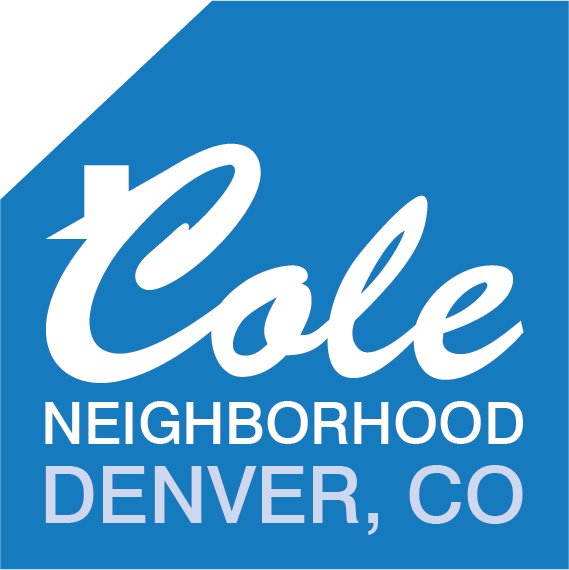History of the Cole Neighborhood
The Cole neighborhood, which became part of the city in 1874, stretches north from Martin Luther King Blvd. (32nd Ave..) to 40th Ave and Walnut St, and east from Downing St. to York St. More than half of the residential blocks were developed prior to 1900. Several historic buildings remain, such as the cleanly designed red brick and sandstone Wyatt School, located at 3620 Franklin St., built in 1887 and named after its former principal, George W. Wyatt.
Early Settlement & Annexation (1871–1874)
The area now known as Cole was first platted in 1871 as Ford’s Addition by Hiram F. and William R. Ford, ranchers in the area. Later subdivisions included Riverside (1871), Hyde Park (1881), and Provident Park (1885). In 1874, these subdivisions were officially annexed into the City of Denver under Territorial Session laws.
Name Origin
The neighborhood and the local junior high school were eventually named after Carlos M. Cole, an influential early superintendent of Denver Public Schools, credited with establishing the city’s junior high model.
Residential Development (1870s–1930s)
By 1900, over half of the residential blocks had been built; by 1930, development extended to 40th Avenue and York Street.
Early residents were predominantly Western European immigrants working in local industries, including rail yards, smelters, stockyards, and warehouses that supported the mining economy.
Housing & Architecture
Cole features one-and one‑and‑a‑half‑story brick Craftsman-style bungalows built between 1910 and 1929. It features excellent examples of Tudor Revival and Mission-style homes from the 1920s to the 1930s. Detached garages from the early automobile era remain significant features of the Historic District.
Cultural Changes (1940s–1970s)
Between the 1940s and 1960s, the neighborhood’s demographics underwent significant changes. Starting in the 1950s, Latinos became the majority, followed by a growing African American community.
Vacancy rates rose during the 1970s economic downturn; several landmark buildings were repurposed, such as the 1888 Swedish Evangelical Lutheran Church, which was converted into housing.
Historic Recognition
The Cole Neighborhood Historic District has been recognized for its cohesive collection of bungalows, garages, and revival-style homes that reflect working-class life in early 20th-century Denver.
Preservation surveys within the neighborhood have documented numerous historic structures, underscoring Cole’s architectural significance.
Modern Revival & Community (Today)
Over the past decade, Cole has undergone revitalization and gentrification, with new residential developments emerging alongside preserved historic homes.
Situated at RiNo’s edge and close to downtown, it offers a neighborhood feel with easy access to light rail, local parks, schools, businesses, and community spaces.
Additional Resources

